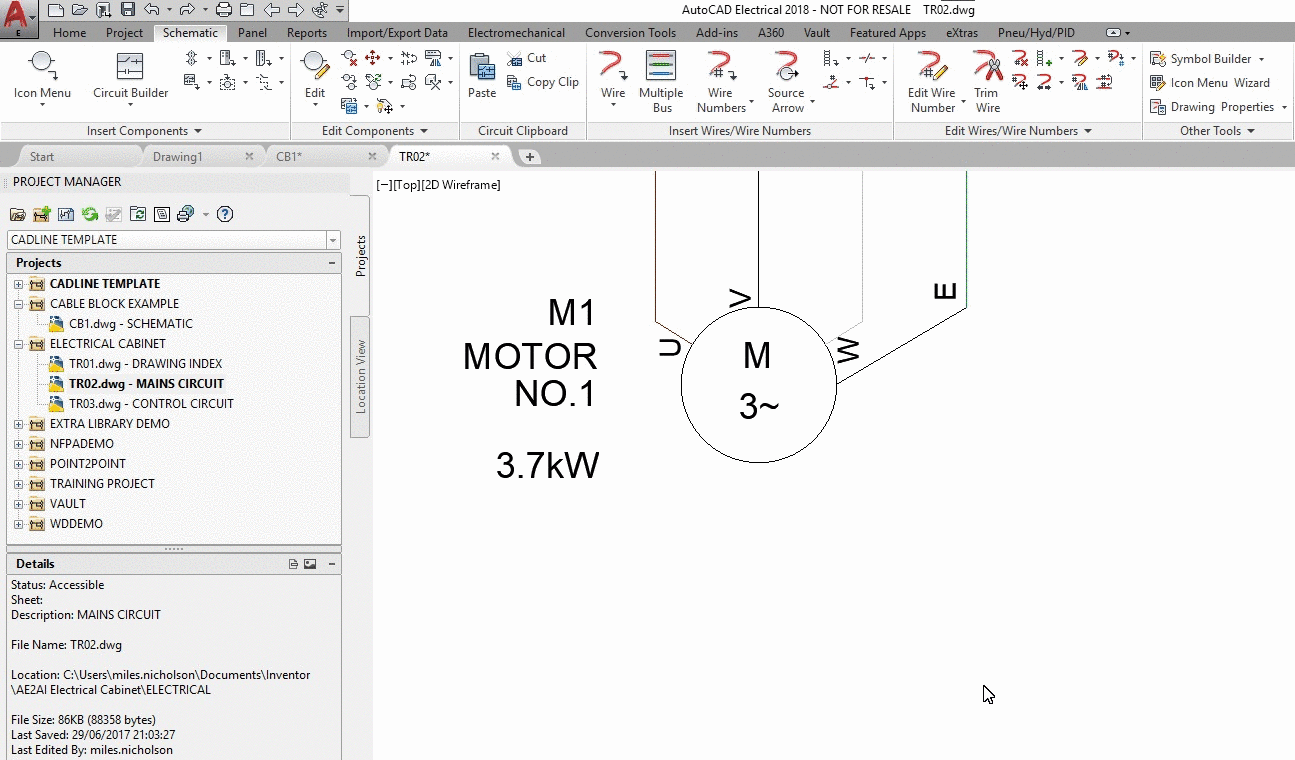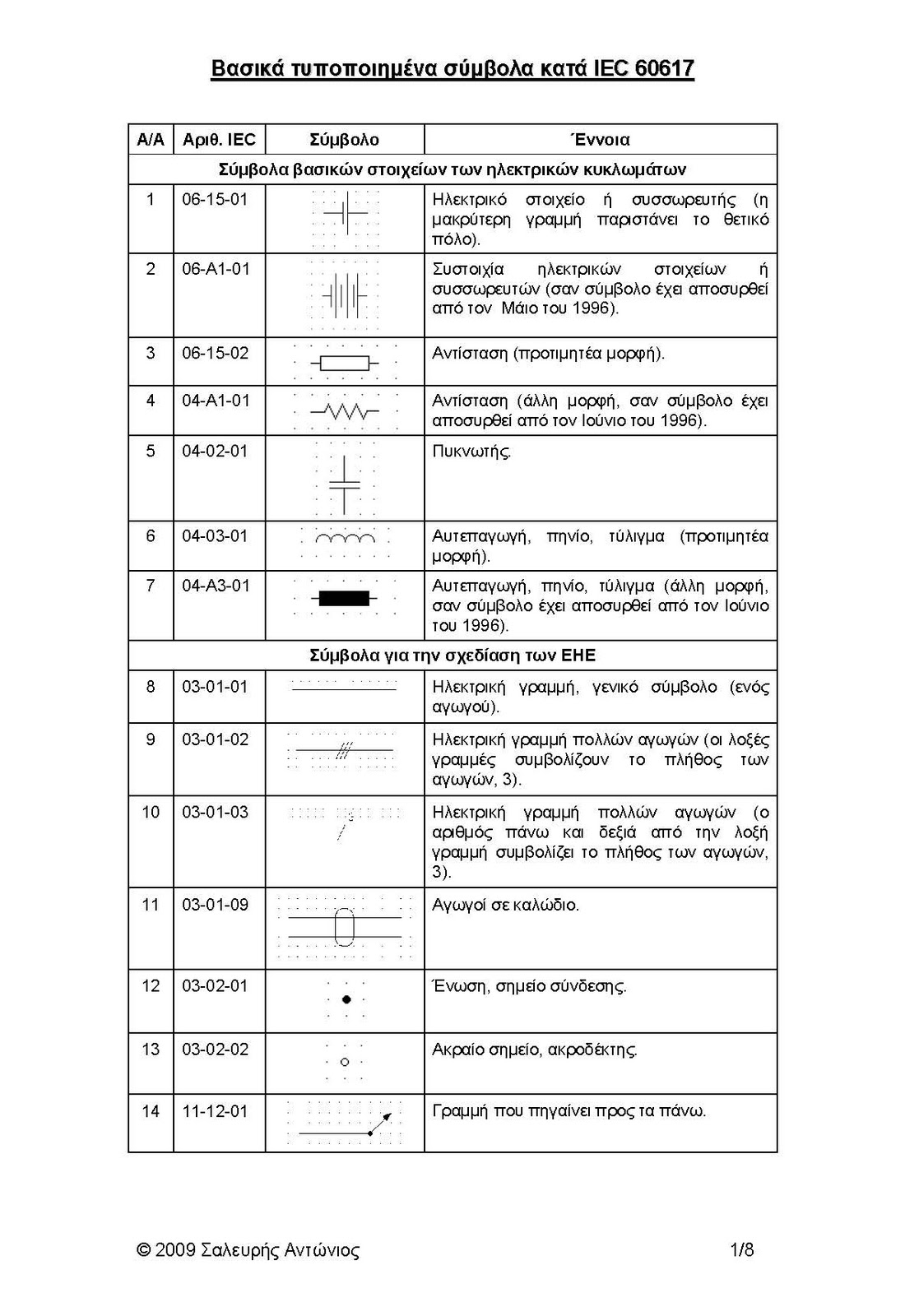
You may wish to check with your customer to determine whether or not they prefer the one-letter or two-letter tags. The IEC60617 library, included with AutoCAD Electrical, tags with the optional two-letter code, based upon the option tables in IEC81346-2. The IEC library that is included with AutoCAD Electrical tags with a one-letter code, based on IEC61346-2. For example, a PLC input, an inverter drive, etc.

It is customary to break the schematic up by placing one control device per drawing. control voltage) is drawn with the hot bus running horizontally across the top of a page and the common/return running across the bottom. Source/destination arrows will pass the potential from page to page. But the main power usually starts at the lower left of the power distribution page, works its way straight up, through switchgear, and then turns right to go horizontal. The 3-phase buses and neutral are generally drawn horizontally across the drawings. If you find the need to scale beyond those ranges, it is best to scale the entire symbol library with the Modify Symbol Library utility.

I recommend not to scale up by more than two, or scale down by less than 0.5. I usually tell people who attend my training that the FSM should be used to scale up or down a small bit a gentle nudge. It is best to avoid this approach because it can cause undesirable issues with respect to crossreferencing and tagging. I have seen customers attempt to use the Feature Scale Multiplier (FSM) in drawing properties to try to scale from metric to English or vice versa. The scale on insert doesn't affect dots, angled tees, etc.

This would make it possible to design on an 11x17 inch paper size with metric symbols, without the need to scale on insert.

You could also use the Modify Symbol Library utility to scale one of the IEC libraries to inches by scaling at 0.03937 scale factor. You will generally want to use an A3 (297x420mm) or A4 (210x297mm) size drawing environment.


 0 kommentar(er)
0 kommentar(er)
